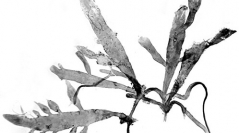

 Cryptogamie, Algologie
31 (4) - Pages 435-449
Cryptogamie, Algologie
31 (4) - Pages 435-449Mitochondria-encoded COI and plastid-encoded rbcL sequences were used to assist with the identification or "barcoding" of a variety of red algal species. The rbcL locus has been extensively analyzed within the Gelidiales and general levels of intraspecific and interspecific sequence divergences are established. Complementary COI and rbcL data sets were compared to explore the utility of COI for Gelidiales species identification and verify the presence of a barcoding gap between closely related species. There was no difference between the two loci in the clustering of specimens into species, but the COI sequences were more variable than rbcL and exhibited a larger barcoding gap between closely related sister species. These results indicate that COI barcoding is a useful tool for the molecular assisted identification of Gelidiales species, especially in cases of closely related species where the more conserved rbcL may be uninformative. The presence of cryptic species within the widely distributed taxon, Pterocladiella caerulescens was also revealed, and taxonomic changes are proposed including the description of Pterocladiella australafricanensis sp. nov.
Also available on Connect.barcodeoflife